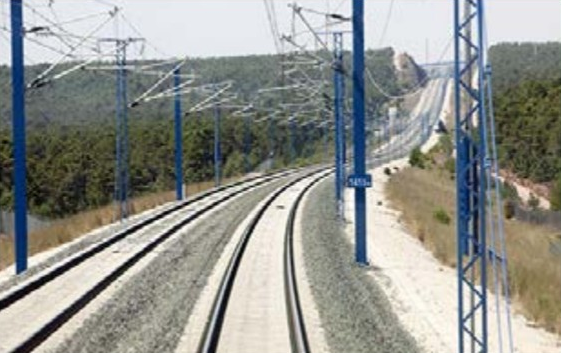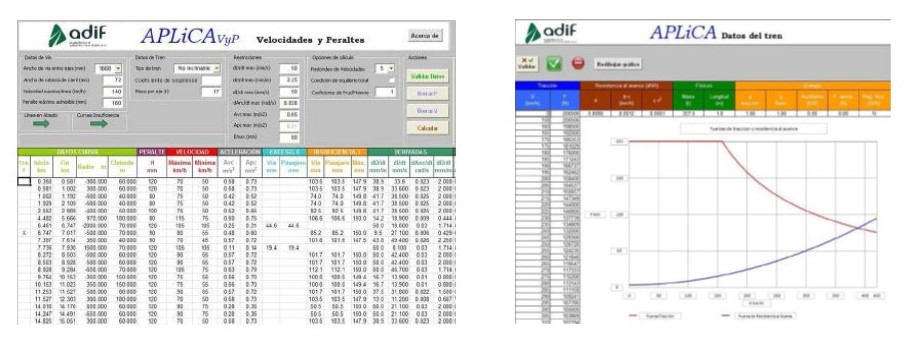Aplica
Computer software for gear simulation, braking distance calculation, ruling gradient calculation and calculation of maximum speeds and cant.

Aplica is a software composed of four independent modules that, based on Spanish and European regulations, performs physical and mathematical calculations to help make decisions in the design, development, and verification of the parameters applied to railway operations.
Aplica is the only tool on the market that can obtain the ruling gradients of a route, and that can be parameterized for any rail gauge.
Aplica is of special interest for freight-traffic lines, since it allows obtaining load charts specifying the maximum loads for each material and line.
Tool for calculating minimum and commercial train gears, and for estimating a train's energy consumption and recovery.
Allows checking time margins in commercial gears, and to calculate gears with energy-efficiency criteria.
Data contrasted with operational applications in Adif and with field samples (*).
Acceleration
Traction
Rolling resistance force
Energy and power required by the train
Energy and power returned to the grid by regenerative braking
Track restrictions (tunnels, neutral zones, etc.)
Emergency and service braking distances needed for total stoppage depending on slope.
Distances between limited-speed signs depending on slope.
Speed depending on camber and vice versa.
Allowing to apply the total equilibrium condition.
All the simulation and calculation algorithms are programmed in VBA code on Excel, using Excel itself for building the user interface.
Working with APLiCA® is simple and intuitive because it has common data-modification tools (cut, copy, paste, etc.). Compatibility with Office tools is complete as results are generated in Excel format.
Train running simulation:
Travel time, speed, energy consumption and recovery, and other magnitudes associated with the movement of a train at minimum speed on a railway line are calculated. Applying criteria, UIC 45-1 sheet.
Braking distances:
According to the technical traffic regulations Renfe NTC 020.95 of 1995 and NTC 021 of 1997.
Ruling gradients:
The ruling gradients of a certain line route are determined according to the general calculation method described in Standard NT-GGC-6 dated 05/01/2001
Maximum cant and speed:
Both the maximum curve passage speed and the minimum cant that allows traffic at the specified speed are calculated, taking into account the line data and the restrictions that must be met. Speed depending on the cant and vice versa. Allowing to apply the total equilibrium condition for greater stability.


